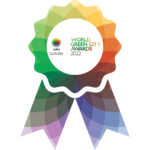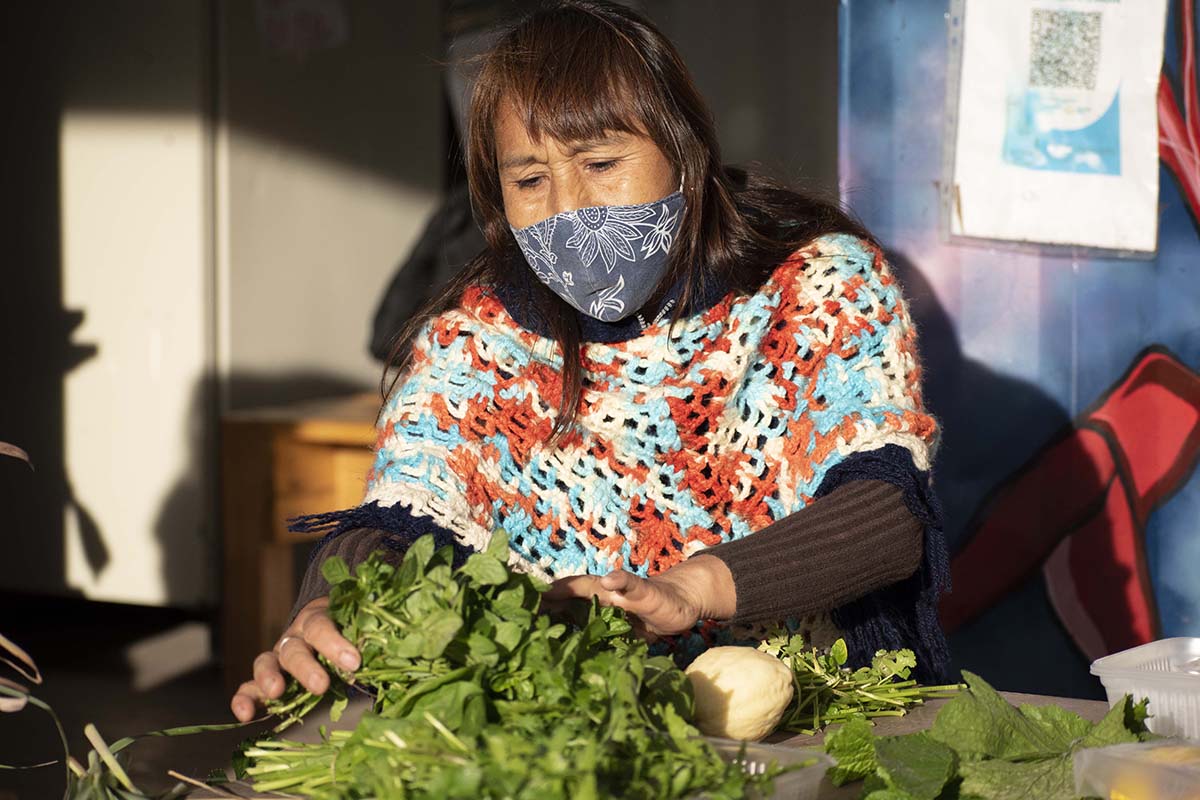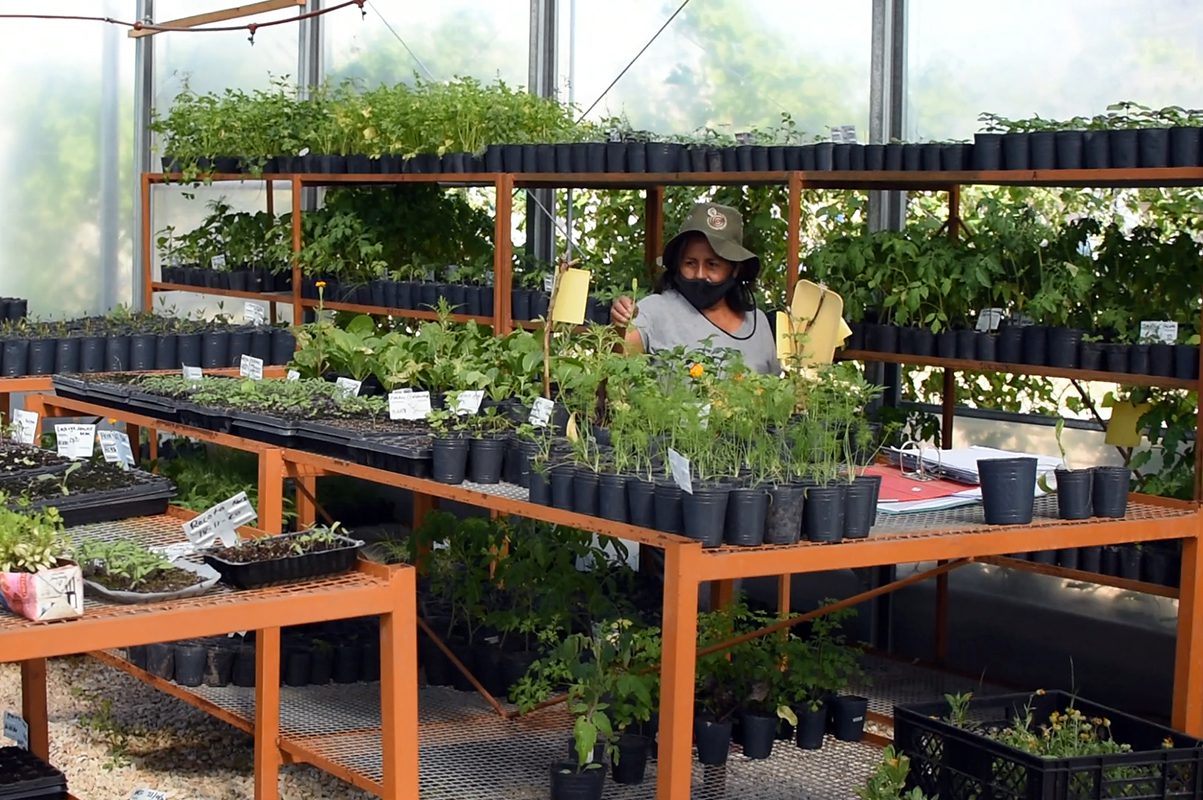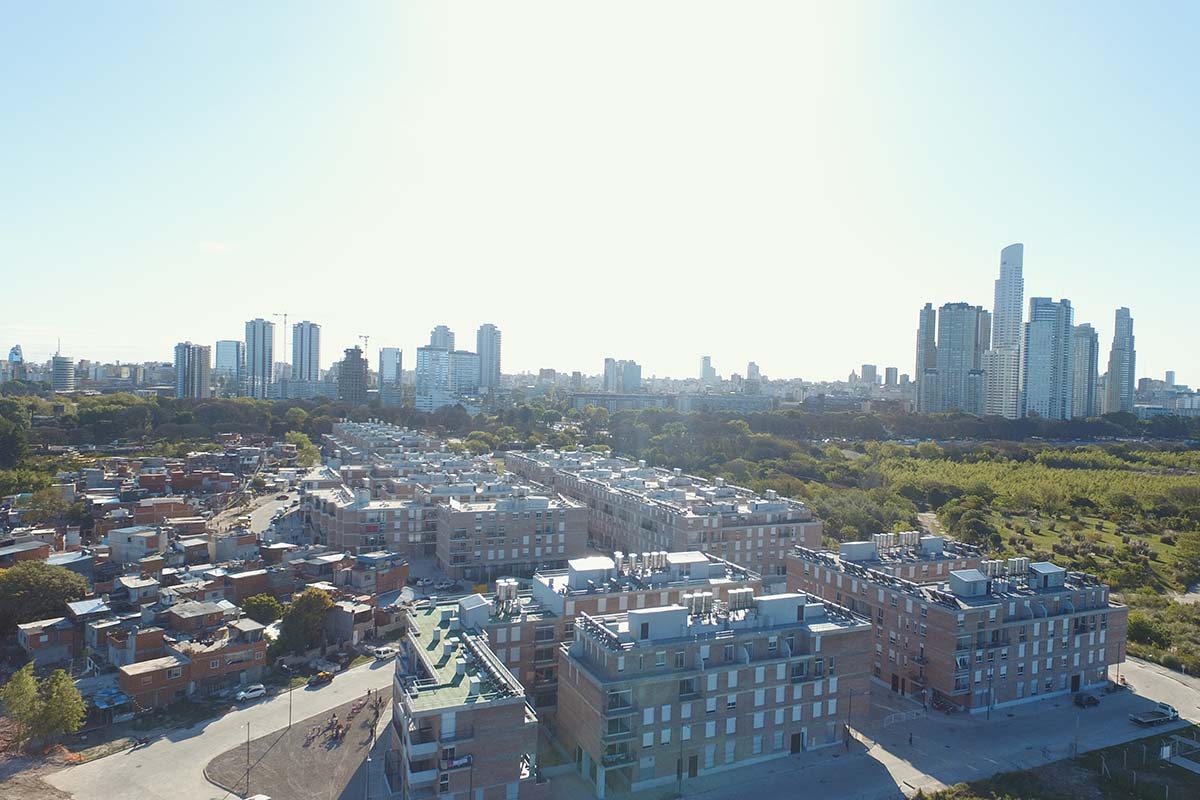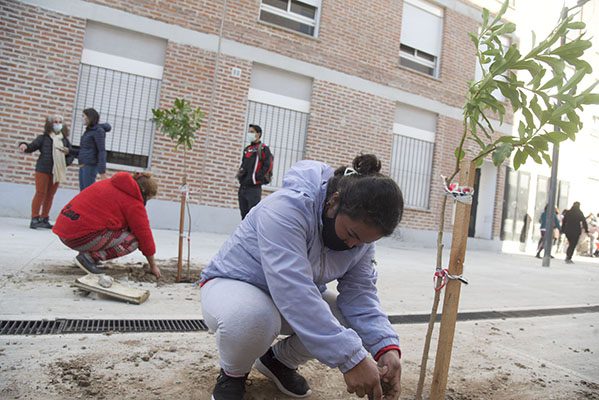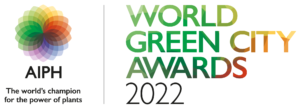Addressing the urban challenge
Breadth of the issue – How are the problem(s) that are being tackled by your initiative affecting citizens/local businesses or a significant component of the local wildlife?
Our initiative addresses a problem that has affected citizens for several decades. The absence of sustainable inclusive public policies meant that, by 2016, the 2,665 inhabitants of the Rodrigo Bueno neighbourhood were excluded, not only from any formal system but also from any opportunity for future growth. The lack of basic living conditions, electricity, running water, sewage and rainwater services, the absence of public transportation due to precarious access to the neighbourhood and the minimum presence of public spaces prevented the neighbours from having opportunities for personal, family, or professional development.
The lack of formal streets prevented the identification of the neighbours’ homes, with all that this involved in terms of personal fulfilment: identity, belonging, reduction of prejudice and greater possibilities.
In addition, the Rodrigo Bueno neighbourhood is located on the edge of the Costanera Sur Ecological Reserve. The lack of proper waste treatment and precarious construction generated an imminent risk for wildlife. In this way, the environmental and sustainable approach of the SocioUrban Integration Process promoted the protection of native species of flora and fauna and raised awareness in the inhabitants about the importance of care and the adoption of habits committed to the environment.
Depth of the issue – How seriously are the problems being tackled by your initiative impacting the life of the citizens/businesses/wildlife concerned?
The proximity of the informal settlement to the Costanera Sur Ecological Reserve posed a series of risks. The natural demographic growth of the neighbourhood (including adding new population from other areas of the city) meant greater pressure in the future for resources, services and especially, urgent access to new land to provide a housing solution to the demands for space for the new families.
In this context, given that the neighbourhood was not formally urbanized, there was a risk that the growth of the settlement would take place on the land of the ecological reserve, which implied a latent focus of conflict given the contrasting interests of both sides. On the one hand, the need to conserve the unique ecosystem services of the wetland, recognized not only locally but also internationally, and on the other, the urgency to resolve access to land and housing, which are also essential for the development of people.
Faced with this situation, the city government together with the neighbours designed the initiative, proposing a new urban area in the space between these two land uses, which solved a large part of the problems of the settlement while the intervention acts as a buffer zone between the city and the ecological reserve, with clear and well defined uses regarding land, and respecting and guaranteeing this healthy interrelation. This urbanization seems to ensure the care of biodiversity, being part of a growing identity of the neighbourhood, which every day is more entrenched by all the neighbours.
The power of plants and natural ecosystems to deliver benefits
How is the initiative shaped by scientific evidence of the potential for plants and natural ecosystems to deliver benefits?
The intervention is a singular case study since it borders the “Costanera Sur Ecological Reserve”, a protected area which is made up of marshes, lagoons, grasslands, thickets, and forests, in addition to the beaches of the Río de la Plata. These bodies of water and wetlands are the most representative and rich environments for biological diversity, representing a true sample of the wildlife of the riparian ecosystem, being also recognized as a RAMSAR site, which offers an international framework for the conservation and wise use of wetlands and their resources.
Declared a Natural Park and Ecological Reserve in 1986, the site sustains large populations of waterfowl, insects, and reptiles. 250 species of birds, 9 of amphibians, 23 of reptiles, 10 of mammals and 50 of butterflies have been identified in the area. Plant varieties also include 245 species from 55 families. Most of these species are highly representative of the biological diversity of the region.
The coexistence of the neighbourhood and the reserve has been worked on in the urbanization project, through institutional responses to the dilemmas posed and through a deep work of integration from the neighbours to Reserve´s life. In this aspect, actions such as the creation of the Nursery, training regarding the biodiversity that surrounds the neighbourhood and visits of neighbours to the reserve with specialists are encouraged. It is expected to generate in the neighbours a feeling of identity and belonging to ensure the protection of the ecosystem that surrounds the neighbourhood.
How has the city exploited the potential of plants and associated ecosystems to deliver more than one benefit?
The integration process led in Rodrigo Bueno neighbourhood considers, since the beginning, the surrounding Ecological Reserve as to develop a strong and sustainable development. The environment of this integration process is one of the main aspects taken into account by every decision board. This is why the neighbourhood was recognized with the national Sustainable Housing Seal, in accordance with the bioclimatic strategies implemented and their link with the Sustainable Development Goals.
As well, the nursery project in the Rodrigo Bueno neighbourhood has also a biodiversity conservation function, by prioritizing the production of native flora seedlings, a decision that is associated with the neighbouring reserve. In this way, some native River Plate species are recovered, facilitating the attraction of pollinators from this habitat so that they fulfil their role in the reproduction of plants, thus increasing local biodiversity. The Nursery is currently working with around 50 native species. This has the additional value of recovering the local flora and that the inhabitants of the neighbourhoods know about them.
Additionally, an Environmental Health Table (MSA in Spanish) was formed based on the interest of the neighbours themselves. This board allows to promote, discuss and propose environmental initiatives. Among them, in the last two years, the MSA promoted the planting of 82 native trees, which potentiate urban biodiversity, favour historical coexistence with the Costanera Sur Ecological Reserve that surrounds the neighbourhood.
Innovative and Collaborative Solution
How does the initiative show evidence of feasibility, including on-going financial and logistical support?
This long-term project is considered feasible as it is one of the priority policies of the local government. In this regard, the integration process is mainly financed by the Latin American Development Bank (CAF). This loan allowed the local government to implement many of the construction, infrastructure and socio-economic projects from 2019.
In financial terms, it is worth considering that the families that move to the new houses already built, have to pay a mortgage in order to encourage sustainability not only of the process but also of the families its selves.
Furthermore, the multilateral bank, academic institutions, such as the Argentinean Catholic University, and non-governmental organizations, such as UN-Habitat, give technical support to hard and soft activities that take place in the neighbourhood.
The participatory governance of the Socio-urban Integration of Barrio Rodrigo Bueno also contributes to the co-creation of consensual public policies and to its long-term implementation since many of the actions also favours the generation of employment, and the promotion and expansion of the economic value of local undertakings.
In what ways is the initiative innovative?
On the one hand, the initiative is innovative because of its participatory governance. Even though the local government has always placed equal access to minimum housing conditions and basic public services for the city population, the way in which it has been addressed has been very different over time. As of 2016, the way of integrating vulnerable neighbourhoods with the rest of the City was rethought, by implementing sustainable public policies that involve participation of the neighbourhoods in the decision-making processes.
Currently, we can demonstrate the effectiveness of the citizen participation devices we use. Every decision-making process regarding housing solutions, urban infrastructure, streets openings and socio-economic policies were analysed together with neighbours, local government, private sector and social organization. Furthermore, participatory governance gradually took over a fundamental place in dealing with environmental issues, favouring sustainable leadership from the neighbourhood.
This joint work allows the creation of initiatives that promote environmental management in order to equate the standard of Rodrigo Bueno with the formal city in terms of opportunities and quality of life. It also favours the emergence of better proposals, turning the neighbourhood into an example of environmental sustainability for the rest of the cities.
On the other hand, the coexistence of the neighbourhood and the Ecological Reserve make the process a unique challenge, where both community and environmental outreach strategies come into harmony and challenge each other to empower themselves, no longer as two separate realities but united by their geography and goals.
How is the initiative supported by collaborative working across disciplines and sectors?
Challenging traditional practices of public policies, a participatory and associative co-management was implemented to integrate Rodrigo Bueno slum based on regulations in its Urbanization Law, No. 5798.
The law, approved unanimously in the city legislature, provides for the participation of all stakeholders in the integration process. Through the Participatory Management Boards, neighbours, government representatives, the private sector and social organizations meet periodically to dialogue and define the actions to be implemented in the integration process. Currently, all of the residents in the neighbourhood are involved in the set of participation devices.
Besides, public and private companies of public services are involved regarding urban infrastructure; every ministry of the City Government participate of each decision process; the interdisciplinary team of the Housing Institute is coordinating every aspect of this integration process; several social and international organizations have been taking part of this process, such as the Latin American Development Bank, the Observatory of the Catholic University and local TV producers; and business associations contribute to the social and economic programs already launched. A good example of this articulation is reflected in the call launched in 2018, together with the Central Society of Architects to receive innovative proposals for the construction of a cultural centre in Rodrigo Bueno.
This participatory model enhances the impact of the actions in the territory. As well, the consensus ensures neighbours’ trust which allows for the sustainability of the long-term integration process.
How does the initiative demonstrate evidence of community support?
The community support, participatory governance and democratic management of the Project are its ground-breaking and innovative aspects. The creation of pre-established and permanent participatory spaces (Participatory Management Boards, Technical Boards, Environmental Health board) allowed neighbours, beneficiaries, private stakeholders and interested organizations to meet and decide both substantial and incidental aspects of the urbanization process, varying from new streets layouts or how the apartments would be constructed, to the names those streets would bear. Additionally, many neighbours were also part of the implementation stage since the companies appointed for the construction were expected to hire local manpower to develop employment. The Development Bank of Latin America (CAF) was also a crucial financial partner in this project. Lastly, a wide range of government departments, NGOs and companies are consulted during the entire process. In addition, the Housing Institute of Buenos Aires City has engineers, architects, sociologists and specialists in urban planning to advise each stage of the development of the process.
A concrete example of collaborative work between neighbours, public and private sectors is the agreement signed with the Hilton hotel in 2021, in which vegetables come exclusively from our nursery.
Implementation, Impact and Replicability
How has the initiative had a ripple effect beyond the scope of the initiative itself, thereby demonstrating a change in the city’s and/or its partners’ way of working with plants?
There is quantitative data and analysis that measures the successful initiative.
Regarding the Socio-Urban Integration Process, to date, 611 new houses with solar heaters were built and 550 families have already moved; 57 commercial premises were also built, of which the first moves have already been made; 31 families have moved in the Internal Home Exchange modality; and 2 productive projects have been fostered and enhanced. Likewise, 3 street openings are being carried out, and already 8 improvement actions have developed the quality of airflow and favour the entry of natural sunlight into existing homes. Housing solutions and new streets allowed current works for the connection to vital infrastructural necessities – i.e., water, sewage, electricity and gas- for the entire population. The Costal Edge is expected to be finished in 2023. Finally, in 2022 shall be finished the 3 green public spaces defined during the neighbourhood planning.
Regarding the Environmental Initiative of this process, a total of 11 Environmental Health Discussion Tables were carried out (considering the time of isolation caused by the pandemic). The Environment Month was organized during June 2021, and various actions were carried out: the planting of 82 native trees, trainings regarding the care of the Ecological Reserve and the treatment of waste, the installation of a Green Point for plastic, metal and glass recyclable waste, the construction of a compost bin for organic waste, and the promotion of a focus study on the composition and volume of waste in various homes in the neighbourhood.
How has the initiative had a ripple effect beyond the scope of the initiative itself, thereby demonstrating a change in the city’s and/or its partners’ way of working with plants?
The improvements introduced by the re-urbanization process promote several actions that arise from the neighbours. Among them we can find the creation of the Environmental Health Table (Mesa de Salud Ambiental – MSA) as the initiative of a group of neighbours who identified that the articulation between the areas of government and environmental needs could also be resolved in a specific area that would deal with issues that are not addressed in detail in other participation processes.
The strengthening of the link between the ecological reserve and the neighbourhood was reflected by the organization of educational visits promoted by residents of the neighbourhood, who made the tour accompanied by specialists from the reserve who shared the importance of the wetland and the associated biodiversity. In this way, the relationship is strengthened, and expands environmental awareness, necessary for this coexistence.
These actions have already produced concrete results such as the planting of native trees in the neighbourhood or the commitment to the reserve to generate training in trades and habits of caring for the environment. But the most important thing is that they were not the product of a government policy, but rather arose from the enthusiasm and contagion that the re-urbanization process came to strengthen.
How have other cities expressed interest in the initiative, or what potential does it have to interest other cities and be customised to their own circumstances?
This integration process has proved its strength, resilience, and replicability. Since 2020 the Ministry of Human Development and Habitat and the Housing Institute keeps regional talks with several Latin American cities, such as Mexico, Medellin, Montevideo, Lima, La Paz and Sao Paulo, with regards to the integration process of vulnerable neighbourhoods of Buenos Aires and the different challenges that the other cities confront within the same topic. Other cities, such as Hamburg and Brussels, have also demonstrated a real interest in this process.
The cities mainly highlighted the importance of participatory governance, the holistic view and the attachment to neighbours’ identity to implement this process in Rodrigo Bueno neighbourhood. They all agreed that these aspects are key to building a real public policy to end poverty with a sustainable approach.
During the talks, it was also important the solutions-for-all that this process has. As it intervenes in a whole neighbourhood, the integration process benefits every neighbour, both in Rodrigo Bueno and the rest of the City of Buenos Aires, as well as the biodiversity in and around the place.
In this regard, as many big cities are going through similar challenges as Buenos Aires, this integration process close to a natural reserve is a best practice to be considered and customized for other urbanization and integration processes.
Sustainability and Resilience
What efforts have been made to reduce the carbon footprint of the initiative?
Due to the unique characteristics of the project natural site, the initiative was designed as a biological corridor associated. Several actions were implemented: planting different species of native trees in the streets and public spaces, as well as in the internal spaces of buildings (little gardens), projects to promote plants on the balconies of new homes and even promoting actions to recover historic trees (that have a historical social interest) that unfortunately, were cut due to technical needs.
In order to reduce the carbon footprint in construction, the housing project was awarded with the “National Seal of Sustainable Housing”. Savings were estimated in several categories, namely Energy (62%), GHG (44%), Site (20%) and Water (1%). This was achieved in part with the supply of hot water through solar heaters, LED lamps in public spaces, and trees to mitigate the urban heat island effect.
At present, work has been done on the management of residential waste recycling, including the neighbourhood within the system already implemented in the formal city. Recycling points are incorporated (with personalized attention to receive recyclable waste) and “green” containers placed in the street.
These actions are complemented by carrying outdoor-to-door awareness campaigns to ensure that the greatest number of residents are aware of and participate in the segregation of recyclable waste (cardboard, paper, metal, glass and plastic). By reusing these materials, we reduce emissions from transportation (the closest landfill is 38 km away) and avoid consumption of virgin materials.
How have the anticipated impacts of climate change been considered?
The initiative was designed to minimize the consequences of climate change and achieve resilient environments. Specifically, the project aims to respond and address local impacts (such as floods, heat waves, severe storms) on a vulnerable sector.
The selection of street trees was done considering the presence of the Urban Reserve aside, to enhance its biodiversity, generate bio corridors and integrate the ecosystem into the new neighbourhood and beyond. Thus, the species already planted, and the future new ones (after finishing the planned works) are native and diverse. The choice of native plants contemplates their tolerance to heat and flood, taking into account the recurrent “sestinas” coming from the very next Rio de la Plata and a warmer climate in the next decades.
The planned works address the possible impacts of Climate Change on the edge projects: on one hand, the Coastal Edge involves relocating the families most affected by possible floods and building adequate infrastructure to avoid overturns in the stream that borders the neighbourhood. Besides, the natural edge of the wetland is maintained, allowing the growing and decreasing river.
The project anticipates the impact of climate change by building new houses and improving existing ones, opening public roads, vehicular streets and pedestrian paths, provisioning urban equipment and infrastructure in accordance with the population density and the needs of the neighbourhood, intervening and improving public space, differentiating treatment of waste, and educating and warning of environmental issues.
What processes does the initiative include for it to be considerate in its use of soils and other natural resources?
The consumption of large volumes of water increases the cost of supply and treatment. In turn, drinking water is a unique and limited resource, which is directly related to energy use. Each drop that falls from a faucet requires some type of treatment or pumping and that is why reducing the consumption of drinking water also implies energy savings.
As already commented, in order to reduce the carbon footprint in construction, the housing project was awarded with the “National Seal of Sustainable Housing”. Various categories were analysed, in which “Site” reached up to 20% of savings considering use of the soil, distance of the project site in relation to the availability of public transport, health and other aspects related to water resources (exploitation and treatment).
Due to the unique characteristics of the project site, the initiative was designed as a biological corridor associated with the natural habitat where it is located. Several actions were implemented in order to achieve this goal: planting different species of native trees in the streets and public spaces, as well as in the internal spaces of buildings (little gardens).
The works undertaken in the re urbanisation, especially those that require soil filling, incorporate the debris generated by the demolitions, thus avoiding the import of soil from other parts of the region.
Monitoring, Maintenance, and Management
How has the initiative been designed and implemented so that long-term needs for management and maintenance are reduced and can be met?
The initiative has a long-term focus. It is sustained through citizen participation that contributes to the co-creation of consensual public policies. It was evaluated by different technical areas of the government that approved its design through a specific technical report.
It is also considered viable, as it is one of the priority policies of the local government, with its own and external financing to pay for the main actions of the process and accompany the economic growth of the beneficiary families. The maintenance of main public services driven to Rodrigo Bueno are in charge of the local government and shall be transferred to the responsible governmental areas once the main works are finished.
Besides, the families moved to new houses are affording a mortgage which allows them to own the house and guarantees sustainability in the long term. As well, the firsts building committees have already been organized to take care of the common areas, as every city building.
In terms of socioeconomic integration, the Housing Institute of Buenos Aires fosters generation and expansion of local undertakings and promotes training for green jobs, as well as meets market labour with employment needs from the neighbours.
What protocols are in place to facilitate monitoring of results?
Several tools are used to monitor the results, effects and impacts of public policies implemented. Evaluation is the mechanism for measuring, systematizing and qualifying government interventions before they are adopted, ongoing, or completed. Evaluation is not only necessary for accountability, but also for learning about experiences for improvement, replicability or greater understanding of the phenomenon. To accomplish this, studies are carried out at different times, both ex ante, during, and ex post each activity.
It should be noted that a social and economic Census was carried out in Rodrigo Bueno in 2016, which provided a baseline of key data to observe socio demographic changes in the neighbourhood.
At the environmental level, impact assessments of air and soil quality have been carried out, which were conducted by the local government. These have been carried out by public entities specialized in this matter. Furthermore, each contractor must prepare an Environmental and Social Management Plan that aims to avoid and minimize the negative impacts of project actions, while enhancing the positive ones. On a monthly basis, reports from all the contractors with their respective indicators (more than 20) are prepared to the IVC which has several environmental supervisors to this end.
Measurements with a focus on the socioeconomic issue are also carried out, in which surveys predominate as a data collection instrument. One of the most emblematic examples is the Expenditure Survey of families moving to new homes in the neighbourhood, and its last implementation was in November 2021.
How has the initiative been enhanced in response to monitoring of results?
The constant review of the participatory processes allows to detect either the success or the need to improve the implemented measures. We believe in “living policies” which are able to grow and adapt to the needs of each moment. That is why monitoring is central in the search for the generation of opportunities. This generates dynamism and permanent development in our social and environmental intervention. The periodicity of the Participatory Management Boards ensures that we are always aware of the needs and challenges of the participating actors in the urbanization process.
The continuous monitoring through follow-up meetings with External Financing Organizations and the internal review mechanisms within the Housing Institute, also allow us to evolve day by day. As an example, after examining the methodology of the contracting processes, we noticed the need to make amendments within the workflow so as to optimize its implementation in the neighbourhood.
















